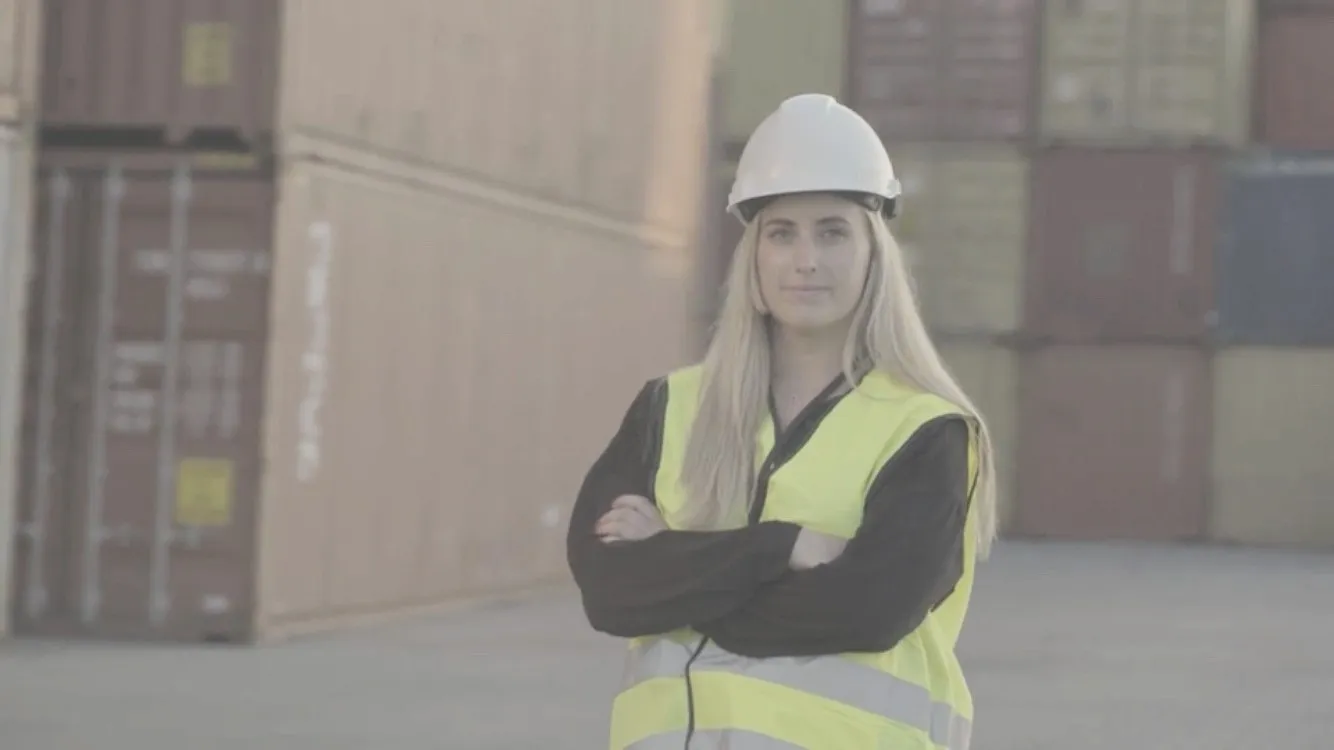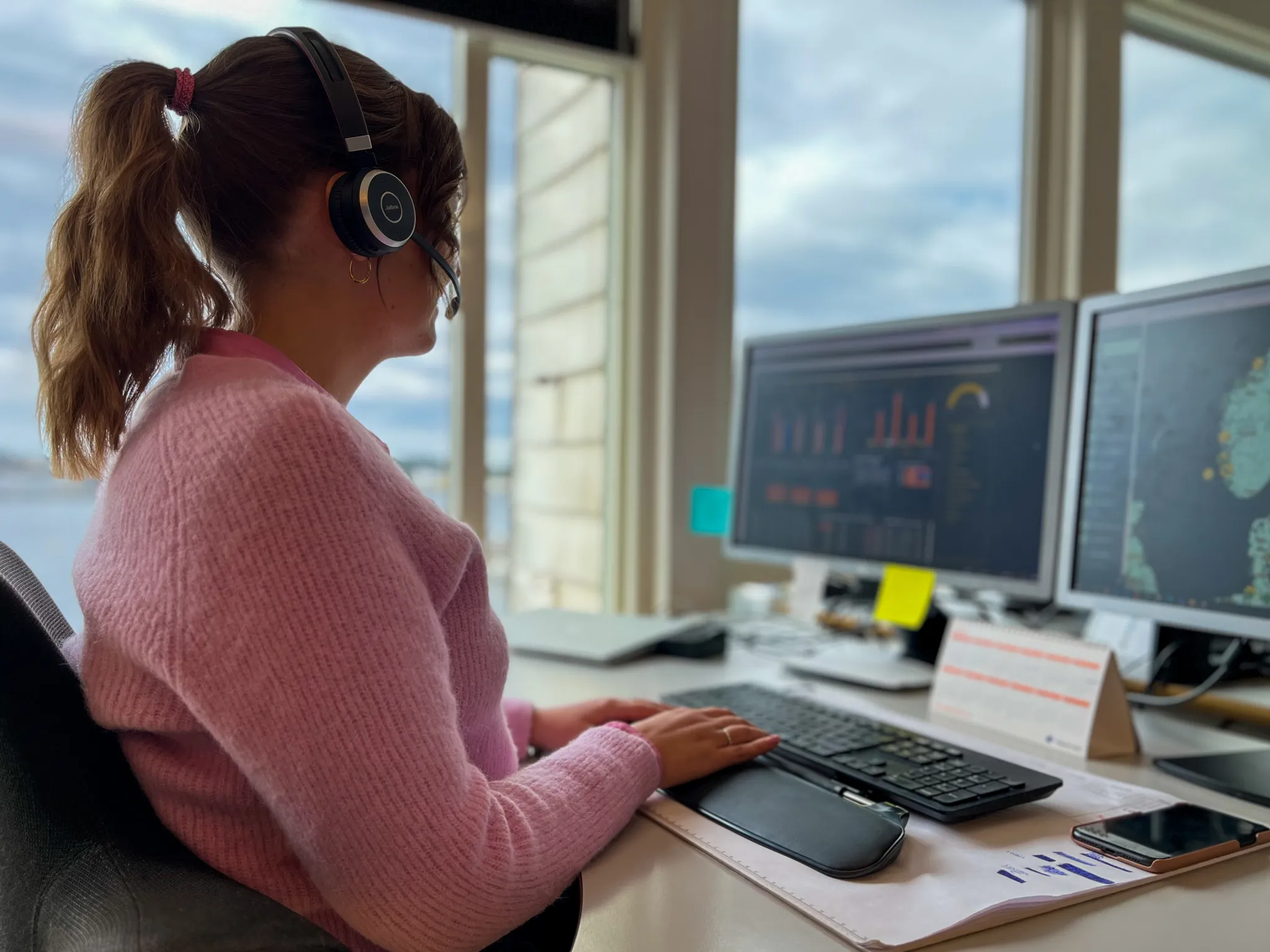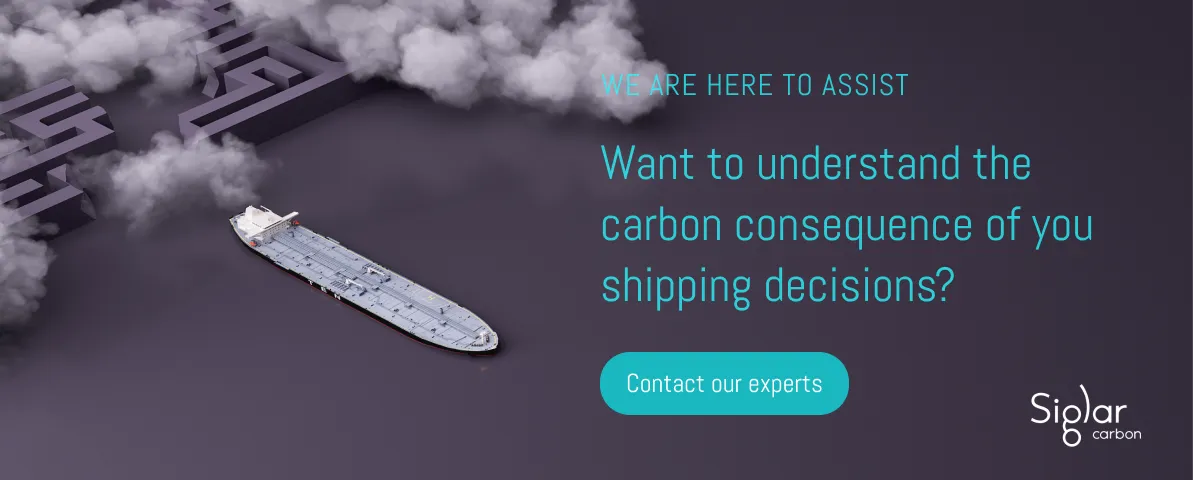Lorem ipsum dolor sit amet, consectetur adipiscing elit. Suspendisse varius enim in eros elementum tristique. Duis cursus, mi quis viverra ornare, eros dolor interdum nulla, ut commodo diam libero vitae erat. Aenean faucibus nibh et justo cursus id rutrum lorem imperdiet. Nunc ut sem vitae risus tristique posuere.
Decarbonisation goals are often vague, with no concrete action plan nor plans to document the amount of emissions reduced. North Sea Container Line and carbon analytics company Siglar Carbon have signed an agreement that can make a change and provide the shipping industry with a best practise.
North Sea Container Line (NCL) and their Managing director, Bente Hetland, has made a promise to their customers: To reduce 50% of their fleet’s emissions by 2025. For reference, the industry decarbonisation target set by the International Maritime Organization (IMO) is to reduce 50% of absolute emissions by 2050. Hetland is determined to both meet and document their target.

I do not want our customers to have any doubt that our decarbonisation promises and targets are real. That’s why our actions will be measured and the related emissions reductions documented by Siglar Carbon, said Bente Hetland.
NCL has ordered two duel fuel methanol ships that will replace three smaller ships in 2025. The ship hull and hold are optimised for energy efficiency and the ship size is maximised for the Norwegian coast. All design measures add up to a 63% reduction in energy use per tonne mile (one tonne cargo carried one nautical mile). However, emissions numbers will also be impacted by the operation of the fleet.

Therefore, NCL operators have KPIs related to energy use per container and with Siglar reporting they get daily updates on emissions from all their ships. The ship maintenance, like coating and cleaning of hull and propeller, is optimised for minimum energy use and loading and discharge time is always pushed to a minimum, within safety first.
To make sure her promises are kept, Hetland use Siglar Carbon to document the real effect of all measures and the actual amount of emissions being cut.
“We are very happy to be able to work with a forward leaning ship operator who thinks about carbon efficiency every step of the way. Our detailed way of measuring emissions will reveal the emissions impact of all the steps taken, large and small,” explained Siglar Carbon CEO, Sigmund Kyvik.
To assure neutral and exact comparing, Siglar Carbon will start to measure emissions from today’s fleet and continue to measure the same elements once the new vessels become operative. NCL captains will report daily to the Siglar operations team using a digital form including necessary data to measure exact emissions.
“It is still a challenge for many ship owners to fully understand the carbon consequence of their decisions. For our customers it’s almost impossible,” Hetland said explaining the need for a neutral third party.

This is not rocket science but we still believe that it represents a “Shipping decarbonisation 2.0” and a necessary step away from version 1.0 where climate targets can be set and marketed without follow-up actions nor a plan to document achieved emissions reductions in a credible way, Sigmund Kyvik added.
At a time where the industry experience turbulent water and a lack of standards to measure emissions and , the need to introduce third party verification of emissions reductions is vital. This is a start, and it could easily become a best practice for the industry and its customers.

North Sea Container Line (NCL) and their Managing director, Bente Hetland, has made a promise to their customers: To reduce 50% of their fleet’s emissions by 2025. For reference, the industry decarbonisation target set by the International Maritime Organization (IMO) is to reduce 50% of absolute emissions by 2050. Hetland is determined to both meet and document their target.

I do not want our customers to have any doubt that our decarbonisation promises and targets are real. That’s why our actions will be measured and the related emissions reductions documented by Siglar Carbon, said Bente Hetland.
NCL has ordered two duel fuel methanol ships that will replace three smaller ships in 2025. The ship hull and hold are optimised for energy efficiency and the ship size is maximised for the Norwegian coast. All design measures add up to a 63% reduction in energy use per tonne mile (one tonne cargo carried one nautical mile). However, emissions numbers will also be impacted by the operation of the fleet.

Therefore, NCL operators have KPIs related to energy use per container and with Siglar reporting they get daily updates on emissions from all their ships. The ship maintenance, like coating and cleaning of hull and propeller, is optimised for minimum energy use and loading and discharge time is always pushed to a minimum, within safety first.
To make sure her promises are kept, Hetland use Siglar Carbon to document the real effect of all measures and the actual amount of emissions being cut.
“We are very happy to be able to work with a forward leaning ship operator who thinks about carbon efficiency every step of the way. Our detailed way of measuring emissions will reveal the emissions impact of all the steps taken, large and small,” explained Siglar Carbon CEO, Sigmund Kyvik.
To assure neutral and exact comparing, Siglar Carbon will start to measure emissions from today’s fleet and continue to measure the same elements once the new vessels become operative. NCL captains will report daily to the Siglar operations team using a digital form including necessary data to measure exact emissions.
“It is still a challenge for many ship owners to fully understand the carbon consequence of their decisions. For our customers it’s almost impossible,” Hetland said explaining the need for a neutral third party.

This is not rocket science but we still believe that it represents a “Shipping decarbonisation 2.0” and a necessary step away from version 1.0 where climate targets can be set and marketed without follow-up actions nor a plan to document achieved emissions reductions in a credible way, Sigmund Kyvik added.
At a time where the industry experience turbulent water and a lack of standards to measure emissions and , the need to introduce third party verification of emissions reductions is vital. This is a start, and it could easily become a best practice for the industry and its customers.
